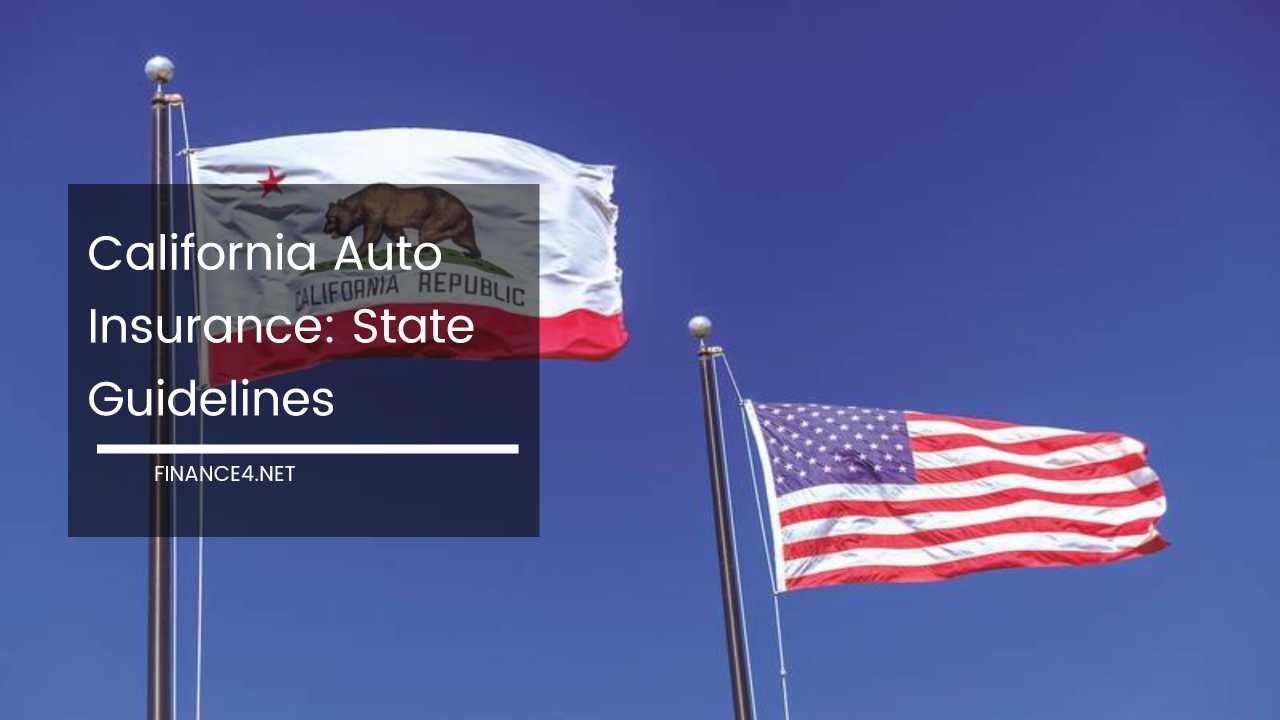California Auto Insurance: Minimums vs. Full Coverage

California Auto Insurance: State Guidelines to Keep You Covered
Cruising down the Pacific Coast Highway or navigating the bustling streets of Los Angeles, California’s diverse landscapes demand a reliable and safe driving experience. But beyond a valid license, having proper auto insurance is paramount for responsible drivers in the Golden State.
This comprehensive guide delves into California’s auto insurance regulations, explores various coverage options, and equips you with valuable tips to navigate the insurance landscape.
Demystifying California’s Minimum Liability Coverage: The 15/30/5 Rule
California mandates all drivers to carry minimum liability insurance, adhering to a financial responsibility principle.
This liability insurance kicks in when you cause an accident, covering bodily injury and property damage inflicted on others. The state enforces a specific minimum coverage level, known as the 15/30/5 rule:
- $15,000 Bodily Injury Liability per Person: This covers medical expenses, lost wages, and pain and suffering for one injured person in an accident you cause.
- $30,000 Bodily Injury Liability per Accident: This applies if multiple people are injured in an accident you’re responsible for. It represents the total maximum payout for bodily injuries to everyone involved.
- $5,000 Property Damage Liability: This covers repairs or replacement of property damaged in an accident you cause, such as another driver’s car or a damaged fence.
Understanding the Limitations of Minimum Coverage:
While the 15/30/5 policy meets the legal requirement, it’s crucial to acknowledge its limitations:
- Escalating Medical Costs: Medical bills can easily surpass the $15,000 per person coverage, leaving you on the hook for the remaining balance.
- Multiple Injuries: If more than one person is injured, $30,000 might not be enough to compensate everyone. You could face lawsuits and out-of-pocket expenses.
- Pain and Suffering Lawsuits: Bodily injury liability doesn’t cover pain and suffering. If the at-fault driver has minimal coverage, you might be burdened with significant financial hardship.
- No Coverage for Your Car: Liability insurance only protects others’ property, not your own vehicle. Consider purchasing additional coverage for comprehensive and collision protection.
Expanding Your Protection: Exploring Additional Coverage Options
California offers a variety of coverage options beyond minimum liability, providing a safety net for various situations. Here’s a breakdown of some essential coverages:
- Collision Coverage: Pays for repairs to your car if it’s damaged in a collision with another vehicle or object, like a guardrail or a runaway shopping cart.
- Comprehensive Coverage: This covers damage caused by events other than collisions, such as theft, vandalism, fire, or natural disasters like floods or hailstorms.
- Uninsured/Underinsured Motorist Coverage (UM/UIM): Protects you financially if you’re injured in an accident caused by a driver with no insurance (uninsured) or insufficient coverage (underinsured).
- Medical Payments Coverage (MedPay): Covers medical expenses for you and your passengers incurred in an accident, regardless of fault. This can be particularly beneficial for minor injuries not covered by health insurance deductibles.
Tailoring Your Coverage:
Choosing the right combination of coverages depends on your individual circumstances and risk profile. Consider these factors:
- Value of Your Car: If your car is relatively new or expensive, collision and comprehensive coverage become crucial.
- Financial Stability: While higher coverage limits offer greater peace of mind, they come with increased premiums. Analyze your budget and risk tolerance to find a comfortable balance.
- Driving Habits: If you drive frequently or commute long distances, consider opting for higher liability limits to ensure you have adequate protection.
Consulting a Licensed Insurance Agent:
A licensed insurance agent can be a valuable resource. They can explain your options in detail, assess your needs, and recommend the coverage that best suits your budget and driving habits. Don’t hesitate to ask questions and explore different quotes before making a decision.
Beyond Minimums: Additional California Auto Insurance Regulations
Understanding these additional regulations can help you navigate California’s auto insurance landscape more effectively:
- No-Pay, No-Play Law: California adheres to a “no-pay, no-play” law. If you’re driving without insurance and are involved in an accident where you’re at fault, you might be restricted from recovering non-economic damages like pain and suffering from the other driver.
- SR-22 Requirement: Driving under the influence (DUI) convictions or driving without insurance can result in an SR-22 filing requirement. This is a form filed with the Department of Motor Vehicles (DMV) proving you maintain liability insurance for a specified period, typically three years. This requirement ensures you remain financially responsible on the road.
- Low-Cost Auto Insurance Program (CLCA): Recognizing the financial burden of insurance, California offers the California Low-Cost Auto Insurance Program (CLCA). This program provides affordable car insurance options for low-income residents who meet specific eligibility criteria based on household income.
Maintaining Financial Responsibility: Keeping Your Coverage Active
Having active auto insurance is crucial to avoid legal repercussions and ensure financial protection. Here are some key points to remember:
- Pay Premiums on Time: Delinquent payments can lead to policy cancellation, leaving you uninsured and facing potential penalties from the DMV. Set up automatic payments or reminders to avoid missing a due date.
- Maintain a Clean Driving Record: Traffic violations and accidents can significantly increase your insurance rates. Practice safe driving habits to maintain a clean record and potentially qualify for discounts.
- Report Address Changes: Notify your insurance company promptly of any address changes to ensure they have accurate information for communication and claims processing.
Shopping for California Auto Insurance and Finding the Best Rates
With numerous insurance providers operating in California, finding the best rates and coverage can feel overwhelming. Here are some effective strategies to navigate the shopping process:
- Compare Quotes: Don’t settle for the first quote you receive. Utilize online quote comparison tools or contact multiple insurance companies directly to compare rates and coverage options.
- Consider Discounts: Many insurers offer attractive discounts for factors like:
- Good driving history (accident-free and violation-free record)
- Multi-policy bundling (e.g., combining car and home insurance with the same company)
- Safety features on your car (anti-theft systems, airbags, etc.)
- Low annual mileage
- Completion of defensive driving courses
- Read Reviews and Check Ratings: Research online reviews and check ratings from reputable organizations like J.D. Power or Consumer Reports to understand customer experiences with different insurance companies.
Remember: Price shouldn’t be the sole deciding factor. While securing an affordable rate is important, prioritize a company with a strong reputation for excellent customer service, efficient claims processing, and a financially stable track record.
Filing a Claim in California: What to Do After an Accident
Being involved in an accident can be stressful. Here’s a basic outline of the claims process in California to help you navigate the situation:
- Contact Your Insurance Company Immediately: Don’t delay in reporting the accident to your insurance company. Follow their specific instructions regarding the reporting process.
- Gather Evidence: Collect as much information as possible at the accident scene. This includes:
- Contact and insurance details of the other driver(s) involved
- Taking pictures of the damage to all vehicles involved and the surrounding scene
- Obtaining witness statements if available
- Cooperate with Your Insurance Company: Provide all requested information and documentation promptly to expedite the claims process. Be truthful and transparent in your communication.
- Be Prepared to Wait: Claims processing times can vary depending on the severity of the accident, the extent of damage, and the complexity of repairs. Maintain patience and keep in touch with your insurance company for updates.
Additional Resources for California Drivers
For further information and resources related to California auto insurance, consider exploring these official websites:
- California Department of Motor Vehicles (DMV): https://www.dmv.ca.gov/portal/
- California Department of Insurance (CDI): https://www.insurance.ca.gov/
The Zebra (California Car Insurance Information): While not a government website, The Zebra (https://www.thezebra.com/about/help/) is a reputable resource offering informative articles and guides on various car insurance topics specific to California.
Final Thoughts
Having the right auto insurance in California goes beyond legal compliance; it’s about safeguarding yourself financially in case of an unforeseen accident.
By understanding the minimum requirements, exploring additional coverage options, and shopping for the best rates, you can ensure you’re adequately protected on the road.
Remember, responsible driving habits and maintaining a clean record are crucial elements in keeping your insurance costs manageable.
Disclaimer: This article is for informational purposes only and does not constitute legal or financial advice. Always consult with a qualified professional for personalized guidance tailored to your specific circumstances.



